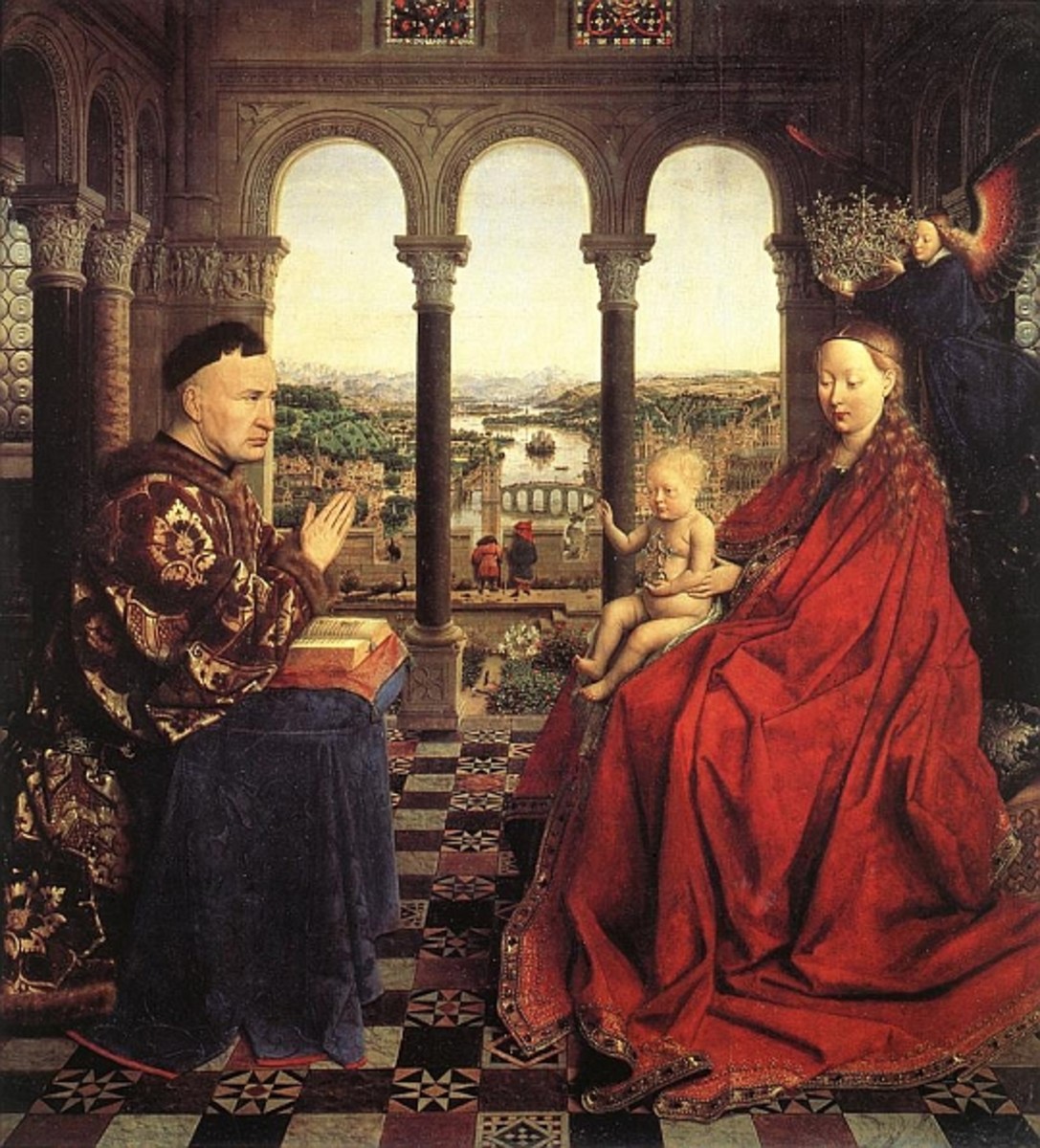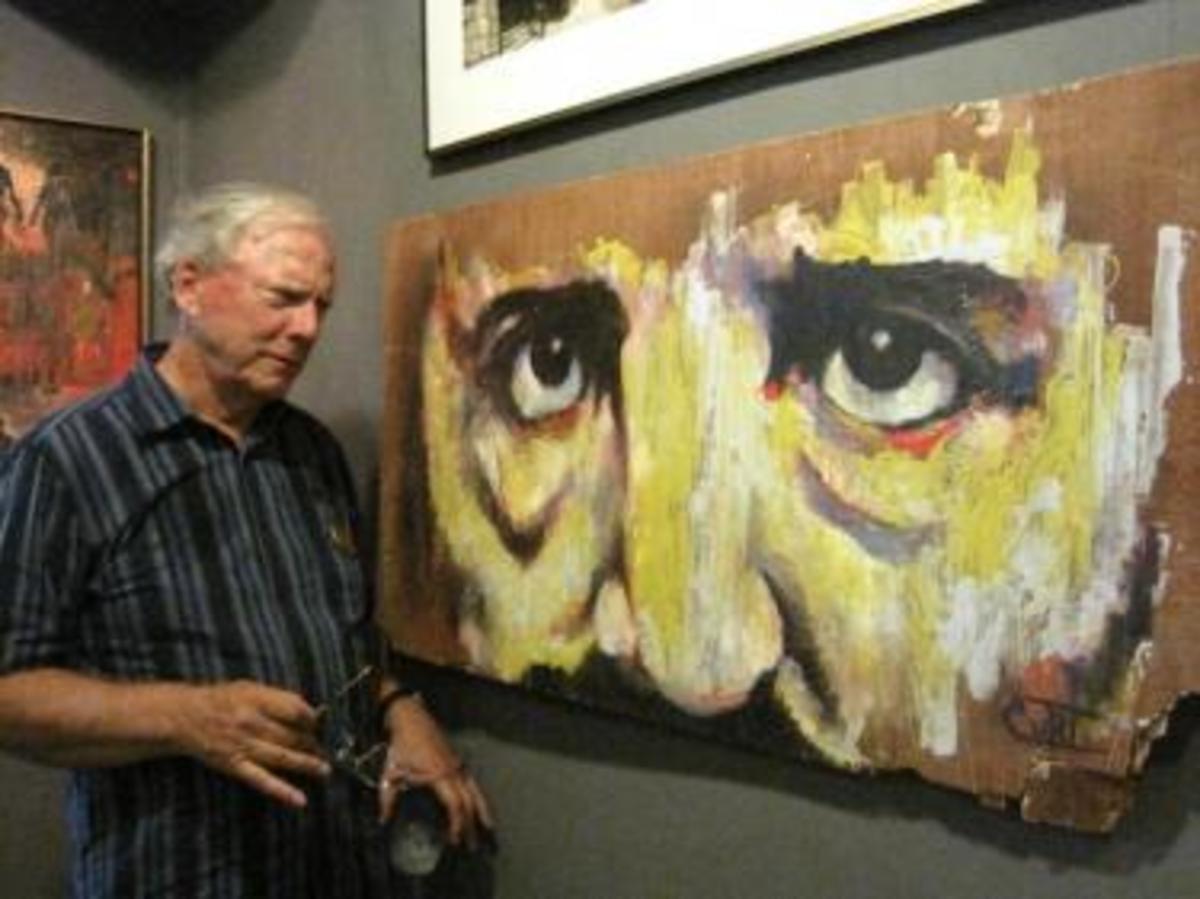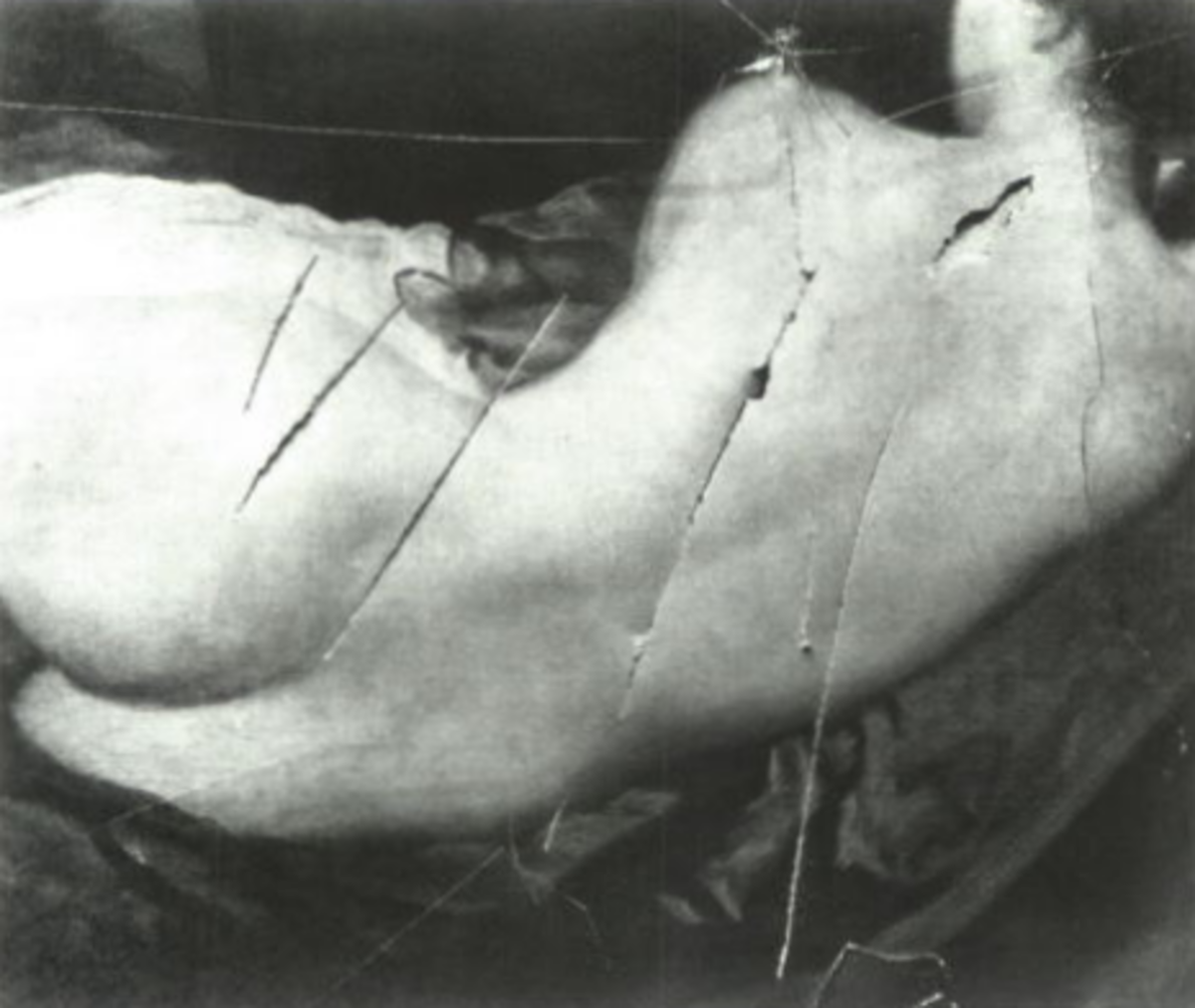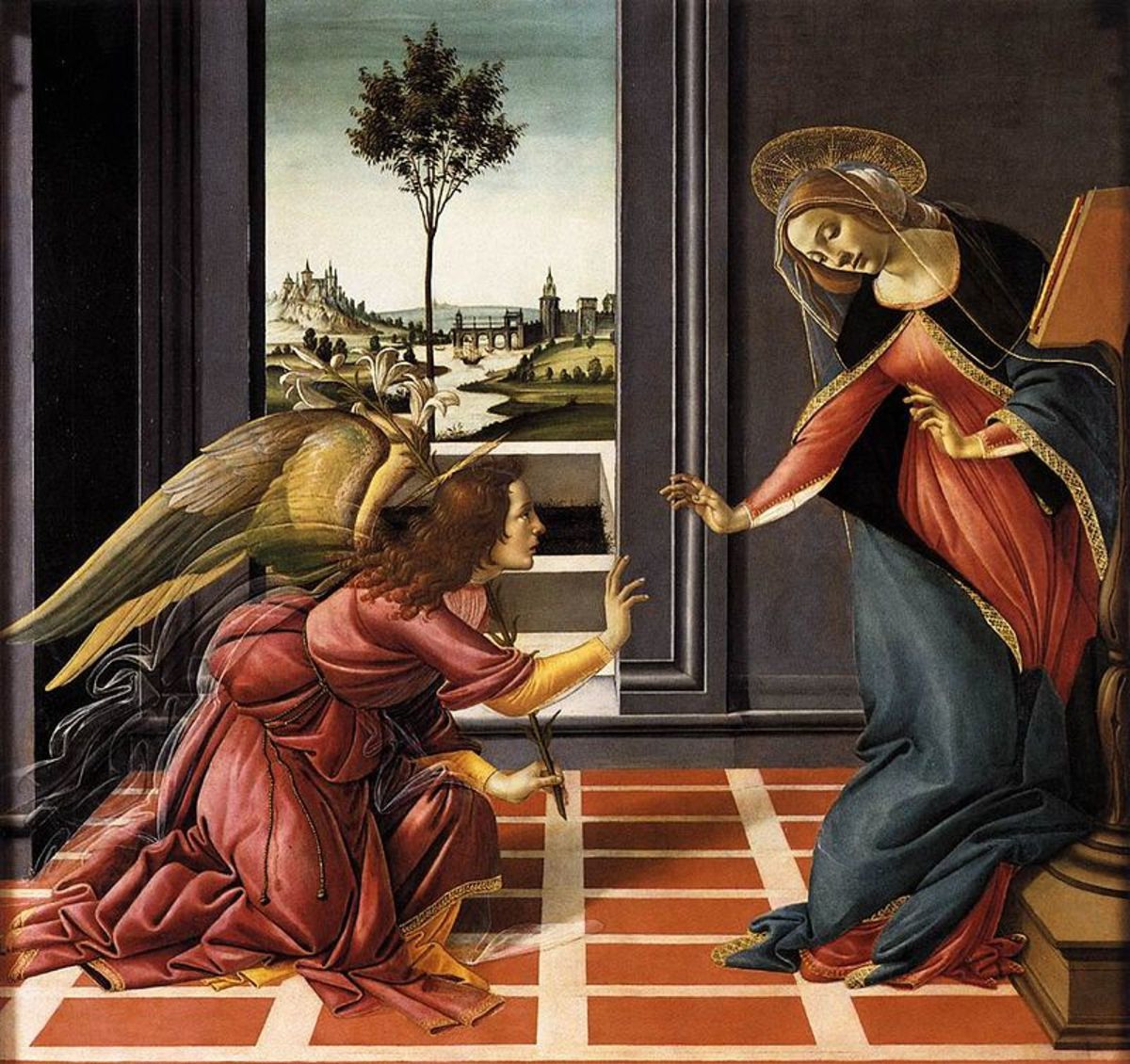The Best Drawings and Paintings in the History of Art
The Annunciation, with St. Emidius
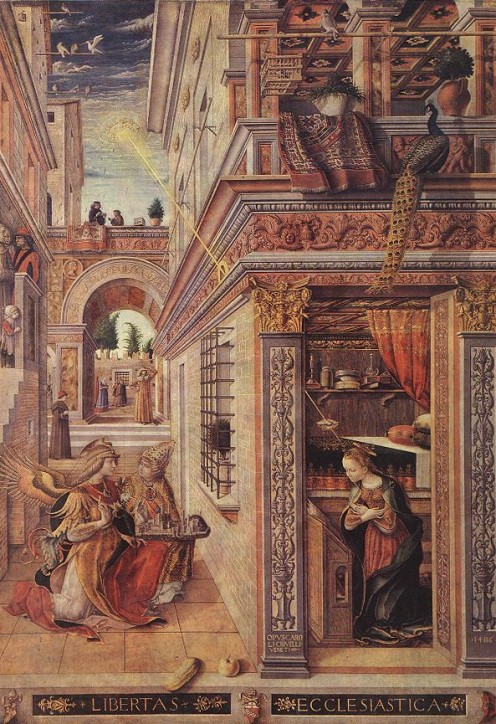
Carlo Crivelli's intricate religious painting titled "The Annunciation, with St. Emidius" could be divided into four sections. Each section painted meticulously constitutes a separate independent image that can be appreciated for its masterly execution.
Despite the complexity of the composition with the overwhelming architectural setting, the viewer is forced to focus on the Virgin Mary's figure genuflecting on the kneeler with her arms crossed on her chest. Even the highly ornamental frame cannot stop one from concentrating on the Virgin, absorbed in meditation on holy words. The diagonal golden ray coming from the crown of light descending from Heaven, directs the viewer through the open door of Mary's modest home to witness the act of the Annunciation. Crivelli situated the Angel and Saint Emidius behind the thick wall of the Virgin's residence. The Virgin Mary's humble garment, in contrast to the more sophisticated garments of the saints, symbolizes her true devotion to God and His service.
Crivelli delineated the richly decorated buildings with mathematical precision, and blended them masterly with the saintly figures, except for the Virgin Mary. Isolated in her unembellished small room, despite the exuberant display of ornamentation surrounding her, the Virgin Mary is the main source of attention, the quintessence of creation. The unusual and unconventional representation of the biblical narrative of the Annunciation testifies to the artist's ingenious and vivid imagination.
Salita al Calvario

In the wall painting "Salita al Calvario" ("Ascending to Calvary"), Giacomo Jaquerio represented the crowd of figures in a chaotic order, and in twisted postures. The contorted facial expressions of individual figures, full of hate and anger, mirror the hidden vices of their corrupted souls. Jaquerio separated the figure of Christ from the disorderly mass by placing Him in the foreground. The figure of Christ, larger than the rest, is the only figure depicted in a natural pose. Surrounded by an ill-natured crowd, Christ in His unspoken silence is trying to express His astonishment: "What have I done to you that even my crucifixion cannot satisfy your insatiable hatred?"
The diagonal direction of the weapons carried by the malignant mob, the enemy of the innocent Christ, accentuates the abominations of the sinful rabble, and exposes the conspiracy of many against one. The strong contrast between the white cloak of Christ placed in the light foreground and the carefully delineated multiple spears in the dark background intensify the gravity of the collective sin, and makes Jaquerio's fresco one of the most powerful representations of this biblical theme.
De humani corporis fabrica, page 178
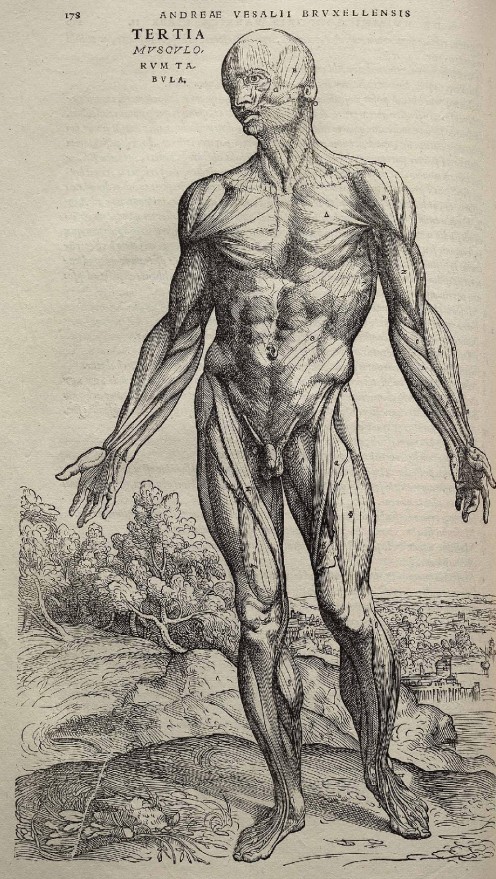
In "De humani corporis fabrica" ("On the fabric of the human body") by Andreas Vesalius, there are several illustrations executed by the same skillful hand. That dexterous hand belonged to a master of drawing, whose name has remained unknown for centuries.
The anatomical drawing of an exceptionally well-proportioned human body stripped from its skin, with every single muscle being portrayed, can be easily considered a masterpiece. Beautifully modeled by using flowing lines, the male human body is manifesting its mobility. Despite the difficult position to be captured, the artist, loyal to every detail, delineated the motion perfectly, making the male figure breathe.
To make the two-dimensional drawing more realistic, the creator placed his figure in a landscape, also masterly drawn. In accordance with the rules of linear perspective, he modeled the lines to define the three-dimensional world surrounding the man. Only a genuine artist and a genuine expert in human anatomy and perspective could have executed this fascinating drawing. Undoubtedly, that expert and artist was Leonardo da Vinci.
The Annunciation
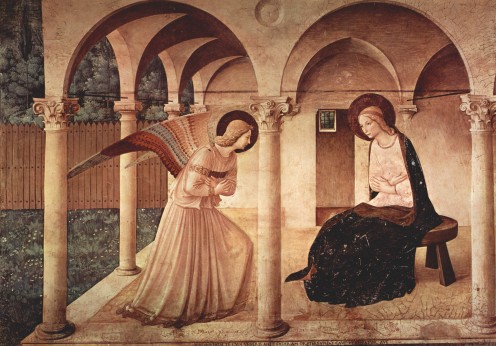
The Annunciation
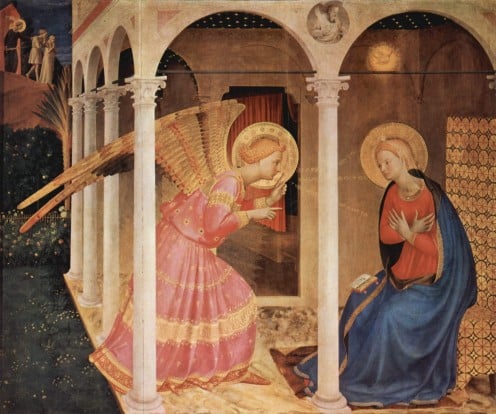
Two versions of "The Annunciation" executed by Fra Angelico make one ponder the importance of the most controversial biblical theme. For both representations, the artist has chosen for Mary's residence a Roman ascetic structure with classical composite columns. However, in the wall painting (fresco), Angelico rendered the capitals of the columns with the utmost attention to detail.
In both paintings, the Archangel Gabriel and the Virgin Mary have blonde hair and delicate features, but in the panel their garments are more ornate and vivid. Although the fresco's Archangel is situated closer to the viewer than Mary, his figure is slightly smaller than Mary's. His wings are not only painted unrealistically but they are also misplaced. And most importantly, there is no connection between the messenger of God and the Virgin. Framed by a Roman arch, Mary appears to be isolated from the outside world, contrary to the other version. In the panel, the whole scene is more alive, radiating a magnetic energy as if the artist desired the viewer's full participation in this mystical event.
The Last Supper
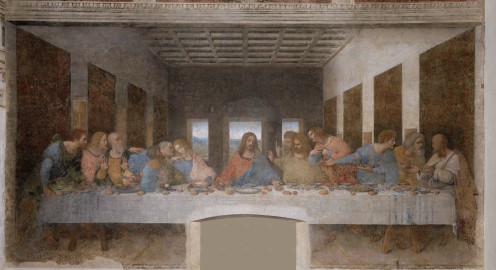
"The Last Supper," in the church of Santa Maria delle Grazie in Milan, is the most enigmatic representation of the New Testament's celebrated theme. The austere interior of a large room painted with precision via application of linear perspective is reminiscent of Roman architecture. Leonardo da Vinci chose a perfect setting for the momentous line from Saint Mark's Gospel, "Unus vestrum me traditurus est" ("One of you is about to betray me").
The ends of the long table that the artist located in the foreground reach the opposite walls, leaving no space for the sitters. Therefore, the two figures placed at both ends were forcefully imposed to be present. The rest of the sitters are crowded behind the table except for Christ. Judas is out of proportion; for his silhouette being situated closer to the viewer, according to the rules of perspective, should be bigger, not smaller, than the figures behind him. He is also out of place, for the sitters next to Christ already took the space that he occupies. Technically and literally Judas was imposed inside the table, for the place for him did not exist.
In addition to all the "errors," the fresco pigments originally applied by Leonardo started disappearing. If it were not for numerous restorations, the entire fresco might have vanished by now. Why would a scientist, a master of linear perspective, and a master of anatomy make deliberate errors in the depiction of such an important religious subject?
The Hunt in the Forest
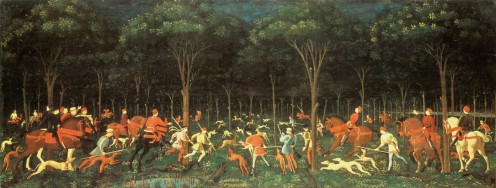
In his complex painting titled "The Hunt in the Forest," Paolo Uccello implemented two different perspectives, linear and nonlinear, and two different compositions, symmetrical and asymmetrical. The striking contrast between his portrayal of nature and his portrayal of human figures is conspicuous. Uccello chose to use linear one-point perspective and symmetrical composition to depict the forest. If one draws a line in the middle of the painting, one will observe the symmetry in the placement of the trees. The artist applied chiaroscuro effect, a strong contrast between light and dark, to achieve three-dimensional appearance of the forest. He devoted his full attention to the trees that he modeled meticulously. The symmetrically diminishing trees contribute to the depth of the forest. The vanishing point in the center makes any spectator appreciate the significance of the linear perspective. In contrast to the elaborate and detailed rendition of the natural setting, Uccello uses nonlinear perspective and asymmetrical composition to depict human figures engaged in hunting. Progressing into the distance, the silhouettes of humans diminish in size. Since the artist portrayed the figures in a nonchalant manner, they appear flat, lifeless, and insignificant. Uccello's divergent and peculiar representation of nature and humans leaves the observer perplexed.
Kiss of Judas
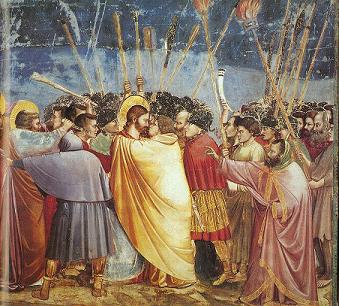
In the fresco "Kiss of Judas" attributed to Giotto di Bondone, the artist captured the drama of the event. Anyone can discern beautifully painted garments and cloaks that embellish the traitors. Albeit clean on the outside, the expressions on their faces and their gestures betray their impure souls. The drama is intensified by the striking contrast between Jesus' calm, handsome face, confronted by the ugly and angry face of Judas. One is forced to focus on the central two figures, especially the figure of Judas who does represent the present traitors and all of those who say yes to God but do not follow—the past, present, and future generations.
When one compares the masterly composition of "Kiss of Judas" illuminated by bright and vivid colors with "The Lamentation of Christ," "Adoration of the Magi," and other dull frescos of Giotto, one realizes that they were not executed by the same hand. Only the portrait of "Dante Alighieri" matches the gifted hand of the unknown artist. The same artist designed the bell tower Campanile for the Florence Cathedral Duomo di Santa Maria del Fiore. Detached from the Duomo and trying to reach the heavens, this humble piece of sculpture is standing free, manifesting its simplicity.
Primavera
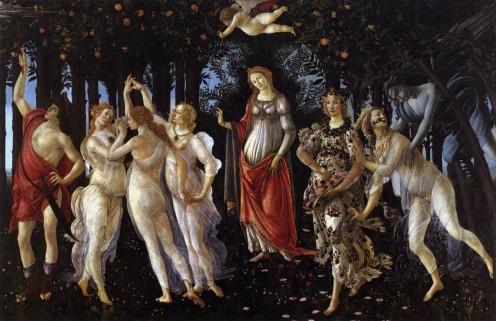
A kaleidoscope of genuine artists will help any reader become familiar with the existence of those who demonstrated in their creations the true love for art.
Sandro Botticelli, who is primarily known as the creator of "The Birth of Venus," portrayed several mysterious figures in his complex but perfectly balanced composition, titled "Primavera." His fluency in the rendition of the silhouettes and their placement in a natural setting testify to his profound understanding of anatomy and perspective. Numerous art critics identified the figures as mythological gods and goddesses.
Since Botticelli situated one female figure in the center of his composition, she is undoubtedly the most important subject, albeit wearing a simple garment and almost immobile. Although identified by art critics as the goddess Venus, with her delicate, facial features and blonde hair she resembles the Virgin Mary portrayed by Botticelli in the "Madonna of the Magnificat," "Madonna of the Pomegranate," and "Virgin and Child with Eight Angels." Throughout five centuries the identity of the central female figure has remained a mystery that no one has yet unveiled.
© 2010 lilia3

